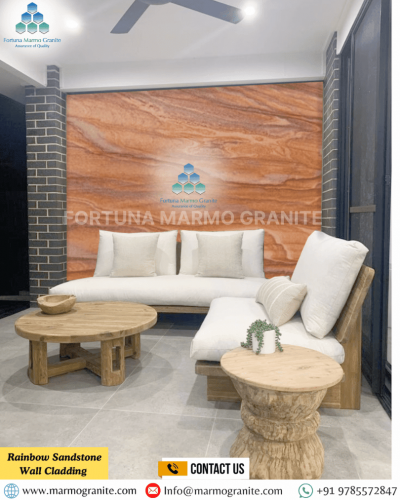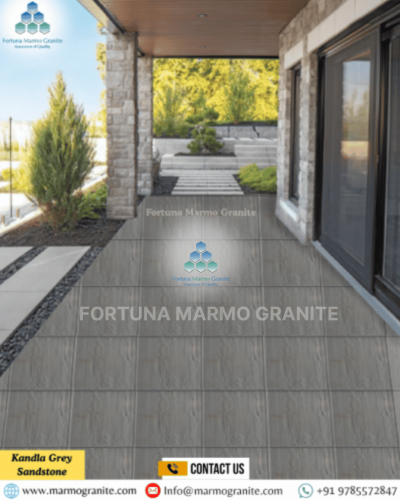Sandstone Cladding Tiles: The Perfect Blend of Durability and Style
Sandstone Cladding Tiles There are very few materials in the world that match the timeless appeal and practical benefits of sandstone. For centuries, it has been used across cultures and continents. Ancient temples, historic forts, and colonial buildings all showcase its natural charm and enduring strength.
Even today, sandstone remains a highly sought-after material. In the form of cladding tiles, it blends heritage with modern functionality. Sandstone cladding tiles combine durability, weather resistance, and aesthetic versatility. These qualities make them ideal for both interior and exterior applications.
In addition, Their rich textures and earthy tones range from soft beiges and creams to warm reds and browns. This variety allows them to complement both traditional and contemporary architectural styles.
Moreover, Whether you are designing a modern commercial façade, a rustic garden wall, or a feature element in your home, sandstone cladding adds natural elegance. It enhances visual appeal while standing the test of time. Moreover, Its insulating properties also improve energy efficiency, making it both beautiful and practical.
What are Sandstone Cladding Tiles?
Sandstone cladding tiles are thin, cut pieces of natural sandstone that are applied to the exterior or interior surfaces of buildings. They function as a protective and decorative layer. Sandstone is a sedimentary rock primarily composed of sand-sized mineral grains or rock fragments. The most common minerals found in sandstone are quartz and feldspar. The natural formation process of sandstone gives it unique characteristics, including its earthy tones, subtle variations in grain, and inherent strength.
These tiles are available in a variety of finishes, such as:
- Honed: A smooth, matte finish.
- Polished: A glossy, reflective finish (less common for cladding due to potential slipperiness and glare).
- Sawn: A relatively rough, natural finish from the cutting process.
- Split-face: A highly textured, rustic finish created by splitting the stone along its natural cleavage lines.
The Unrivaled Durability of Sandstone
One of the primary reasons for choosing sandstone cladding tiles is their remarkable durability. This natural stone has stood the test of time, evident in ancient structures that still stand proudly today. Here's why sandstone is a robust choice for cladding:
- Weather Resistance: Sandstone is inherently resistant to various weather conditions, including rain, wind, frost, and UV radiation. Its natural composition allows it to withstand significant temperature fluctuations without cracking or deteriorating. This makes it an ideal material for diverse climates, from scorching deserts to freezing winters.
- Longevity: Unlike synthetic materials that can degrade over time, sandstone's natural strength ensures a long lifespan. When properly installed and maintained, sandstone cladding can last for many decades, often outliving the structure it adorns. This makes it a cost-effective choice in the long run, as it minimizes the need for frequent replacements or repairs.
- Impact Resistance: Sandstone is a dense and solid material, making it highly resistant to physical impact. This characteristic is particularly beneficial for exterior applications where the cladding might be exposed to accidental bumps or minor collisions.
- Fire Resistance: As a natural stone, sandstone is non-combustible and offers excellent fire resistance. This adds an extra layer of safety to buildings, helping to contain fires and prevent their spread.
- Low Maintenance: While sandstone is a natural material, it generally requires low maintenance. Regular cleaning with water and a mild detergent is usually sufficient to keep it looking its best. Unlike some other cladding materials, it doesn't require frequent painting, sealing (unless specified for enhanced stain resistance), or complex treatments.
The Exquisite Style of Sandstone
- Natural Beauty and Earthy Tones: Moreover, Sandstone is celebrated for its warm, earthy color palette, which includes shades of beige, cream, yellow, brown, red, and even subtle grays. These natural variations and subtle veining patterns create a unique and organic look that cannot be replicated by artificial materials. Each tile tells a story of geological formation, adding character and depth to the facade.
- Versatility in Design: In addition, Sandstone cladding tiles seamlessly integrate with various architectural styles.
- Traditional and Rustic: For a classic or rustic aesthetic, split-face sandstone with its rugged texture can evoke a sense of timeless charm and connection to nature.
- Modern and Contemporary: Honed or sawn sandstone, with its cleaner lines and smoother finish, can lend a sophisticated and minimalist touch to modern designs. The subtle variations in color add warmth without overwhelming the contemporary aesthetic.
- Texture and Finish Options: Moreover, The different finishes available for sandstone cladding tiles offer diverse tactile and visual experiences.
- Honed: Provides a smooth, elegant surface that reflects light gently, ideal for a refined look.
- Split-face: Offers a dramatic, textured surface that creates striking shadows and highlights, adding a robust and natural feel.
- Sawn: Presents a more understated texture, showcasing the natural grain of the stone without being overly rough.
- Complementary to Other Materials: In addition, Sandstone's natural hues and textures complement a wide range of other building materials, including glass, wood, steel, and concrete. This allows for harmonious integration into complex architectural designs, creating visually appealing contrasts and balanced compositions.
- Enhanced Curb Appeal and Value: The use of natural stone like sandstone immediately elevates the perceived value and curb appeal of a property.
Applications of Sandstone Cladding Tiles
The versatility of sandstone cladding tiles makes them suitable for a wide array of applications:
- Exterior Facades: Moreover, This is the most common application, providing a durable and aesthetically pleasing protective layer for residential homes, commercial buildings, hotels, and public institutions.
- Feature Walls: In addition, Both indoors and outdoors, sandstone cladding can create stunning feature walls that act as focal points, adding texture and warmth to a space.
- Retaining Walls: Yet, Enhances the look of retaining walls, blending them seamlessly with the natural landscape.
- Fireplace Surrounds: Adds a rustic yet elegant touch to interior spaces, creating a cozy and inviting atmosphere.
- Column Cladding: Consequently, Transforms ordinary columns into architectural statements, adding grandeur and character.
- Landscaping Elements: Moreover, Can be used for garden walls, outdoor kitchens, and other hardscaping features, integrating the built environment with nature.
Conclusion
In conclusion, sandstone cladding tiles prove how natural materials can combine strength with elegance. Their organic textures and earthy tones make them versatile for many design styles, from rustic and traditional to sleek and modern. Architects, designers, and homeowners value them for both beauty and performance.
Unlike synthetic options, sandstone tiles offer a unique character that matures gracefully over time. This adds a timeless charm to any structure. Their resistance to weather, temperature changes, and moisture further ensures durability indoors and outdoors.
Whether used for facades, garden walls, fireplaces, or accent panels, sandstone cladding tiles deliver both style and function. They reduce maintenance needs while also enhancing insulation and structural integrity.
Indian Granite Supplier At Fortuna Marmo Granite, Consequently, we bring decades of expertise in sourcing, processing, and supplying premium-quality sandstone cladding tiles from the heart of India's finest quarries. Yet, Our advanced manufacturing techniques and commitment to international standards guarantee precision in cut, uniformity in thickness, and elegance in finish. With a dedicated team focused on client satisfaction and timely delivery, we offer tailored solutions to suit both small-scale residential projects and large commercial developments. In addition, Choosing Fortuna Marmo Granite means investing in a legacy of craftsmanship, natural beauty, and reliability—ensuring that every wall adorned with our sandstone cladding becomes a statement of enduring style and strength.



